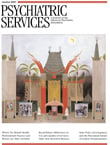Textbook of Psychotherapeutic Treatments
When I was a second-year resident, I had my first meeting with a patient about whom I had been exhaustively forewarned: she was exceptionally astute, intermittently psychotic, and habitually sadistic. She immediately asked what I knew about interpersonal therapy. I cringed, admitting that I really didn't know much, and spent the rest of the appointment trying to regain some semblance of competency. Surely I had been post-call for that lecture.
When I first opened Glen O. Gabbard's Textbook of Psychotherapeutic Treatments, I turned directly to the segment devoted to interpersonal therapy and found four concise chapters: Theory, Techniques, Applications, and Combination With Medication. I read those chapters first, to find out what I could have said. Next I found the section on cognitive-behavioral therapy and found four corresponding, well-written chapters. From the perspective of a fourth-year resident, this book offers an excellent quick but comprehensive orientation (and reorientation) to a variety of psychotherapies, many of which are covered in residency training and some of which are not.
Included in Gabbard's book are sections on psychodynamic, cognitive-behavioral, interpersonal, and supportive therapies. These sections are followed by eight shorter sections (one chapter each) covering several permutations of therapeutic assemblage, including family systems theory and practice and couples therapy (including emotionally focused, psychodynamic, and behavioral therapies). Group therapies covered include psychodynamic, family interventions, and cognitive-behavioral therapy for pain. All chapters are peppered with enough references to demonstrate adequately the book's scholarly origins, without creating mental tangents that detract from its readability. The book is certainly approachable for the busy and novice practitioner.
The book ends with chapters that initially look a bit miscellaneous but are actually pertinent and interesting chapters on psychotherapy integration, mentalization-based therapy, brain processes informing psychotherapy, and professional boundaries. Dialectical behavioral therapy is unfortunately placed in the midst of this last section, though it certainly merits the status of the other therapies to which four chapters are devoted. For anyone else who is new to the term, "mentalization" refers to a "procedural, mostly non-conscious … intuitive rapid emotional reaction in response to all the social and personal interactions around us," a "process by which we make sense of each other and ourselves." It is linked to borderline personality disorder by attachment theory, with the assumption that the disorder is caused by a reduced capacity for this skill. It is the focus of a relatively new form of therapy for patients with borderline personality disorder and is aptly placed alongside the chapter on dialectical behavioral therapy.
The chapter on brain processes presents the most novel and interesting material, effectively providing a compelling case for the study of neurobiological processes by the average practicing therapist and certainly the average psychiatrist. All in all, this book is an excellent reference for residents, therapists, psychologists, and any practicing psychiatrist who wishes to fortify and expand his or her knowledge of psychotherapeutic interventions, their theoretical bases, and current advances in exploration of their neurobiological correlates.
The reviewer reports no competing interests.



